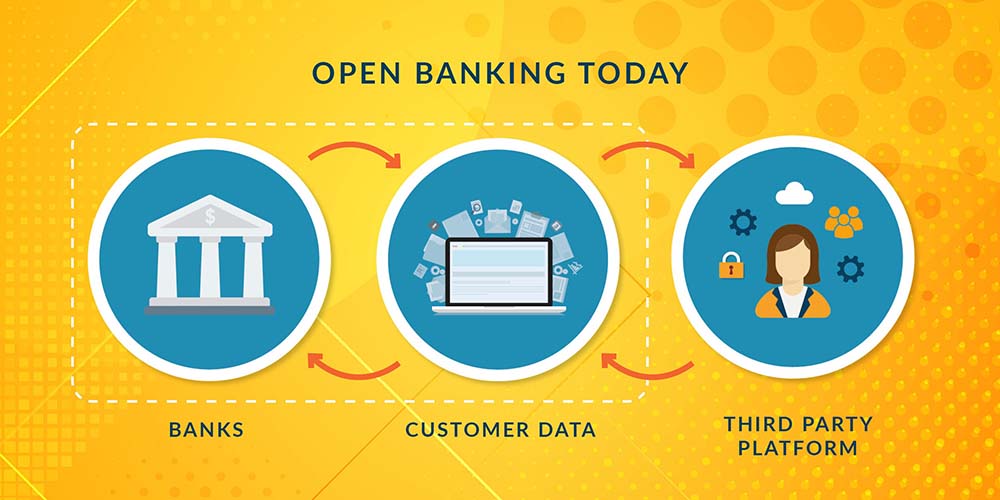In 2022 InfoTrack launched The Onboarding Summit to explore the opportunities and challenges of delivering brilliant digital client onboarding. Here we take one of the hot topics, using Open Banking for Source of Funds checks, and dig deeper into how it reduces the risks of fraud and improves compliance.
How does Open Banking improve Source of Funds checks for law firms?
We recently held a session about Open Banking and digital ID verification technology at The Onboarding Summit. Speaking with experts from TrueLayer and GBG, we demystified the technology behind these tools and how they can benefit law firms. If you missed it, catch up on-demand now.
You may have heard the term ‘Open Banking’ at an increasing rate in recent years. Whether in your personal or professional life, the use of Open Banking is growing, and law firms need to understand how it works and the benefits it offers both them and their clients.
Money laundering continues to be a problem that affects the legal sector, especially with conveyancing transactions. Figures published by the SRA in 2021 unveiled they had reported suspicious activity of over £200m to authorities in the previous 12 months. To help tackle the ever-growing issues around financial crime, firms must enhance their client due diligence processes to ensure they’re robust and secure, effectively minimising the risk.
One way firms can manage the risk related to financial crime is through Source of Funds checks, made easier with the use of Open Banking. As a more recent tool available to law firms, we’ll look at what Open Banking is, how it works and the security. We’ll also cover the benefits for law firms and how you can take advantage of Open Banking for your Source of Funds checks through InfoTrack’s eCOS and Verification of Funds (VOF) solutions.

What is Open Banking?
Open Banking is the term describing a data standard that means all banks hold their client's financial data in the same way. This in turn means a user can move money and services between banks more easily. It also means that you can give financial institutions and other regulated third parties access to your financial data so that they can provide services to you - like letting you view funds with multiple financial providers in a single app.
The purpose of Open Banking is to improve financial services for banking customers, such as allowing law firms to complete source of funds checks on clients as part of their due diligence process.
How does Open Banking work?
Open Banking enables authorised third parties to access data from a consumer’s bank or financial institution, such as account data including name, account type, open date, and currency, as well as transaction details. For conveyancing or private client work, open banking can streamline the source of funds checks for law firms by eliminating the need to scan or upload bank statements by providing real-time transactional data.
Open Banking is used across a range of consumer services now, using two-way exchange. Once a user has authorised the access, the data is shared with the third-party to provide specific services. This could range from Source of Funds checks to automation with additional financial apps, such as investment or savings services.
Open Banking is helping to automate processes and increase accessibility of services for users. With the control in the hands of the consumer about who they give access to and for how long, it’s transforming how consumers can choose to share financial data and the ease of access for businesses they liaise with.

Is Open Banking secure?
Security is at the heart of Open Banking, ensuring users are protected from risk. How is security achieved with open banking? There’s four key ways risk is being managed:
- Bank-level security is in-built, which means rigorous testing of both software and security systems is undertaken for open banking. A consumer will never be asked to provide access to bank login details or passwords to anyone beyond their own bank or building society provider.
- Regulation provides greater protection. To enrol in Open Banking, apps or websites must be regulated by the FCA or a European equivalent to be eligible.
- The consumer is in control by being empowered to choose when and for how long access to their data is made available.
- Additional protection is provided in the form of the consumers bank or building society paying money back if fraudulent payments are made. They’re also covered by data protection laws and the Financial Ombudsman Service to give your client peace of mind.
What are the benefits of Open Banking?
If you’re wondering what benefits your law firm can gain from using Open Banking data, there are a few clear advantages of using Open Banking.
- Centralised services mean your firm can access the information you need through an existing service provider or platform, minimising the different services you need to access. If you’re connected through an integration too, the results can be returned directly to your case management system.
- Access to financial data in real-time so you don’t need to wait for bank statements to be posted or PDFs uploaded by your client.
- Streamlined technology can help firms of any size access services that can reduce productivity drains and reduce the associated costs of these inefficiencies.
Complete Source of Funds checks through eCOS using Open Banking
At InfoTrack, we create technology to alleviate the burden of time-consuming tasks. Open Banking is a perfect example and is seamlessly integrated into eCOS (electronic client onboarding solution). eCOS is an all-in-one digital onboarding solution for law firms that enables firms to gather the key client information required to open a matter, reducing onboarding from weeks to hours.
Built into the eCOS workspace, you can complete your clients’ Source of Funds checks using a digital tool that captures verified data from their bank account. With the ability for your client to access their eCOS workspace from any device, anywhere, including a fully branded app for your firm if you choose, they can authorise open banking to enable the sharing of transactional data for the funds verification process. All results can also be automatically returned directly into your case management system if you’re integrated, streamlining the process for you.
Discover more about Open Banking with Truelayer
InfoTrack is an FCA accredited agent of TrueLayer, one of the world’s leading providers of Open Banking services. We recently caught up with Roger De’Ath, UK Country Manager at Truelayer, to find out more about the technology behind Open Banking and how it really works. Watch the session now from The Onboarding Summit now.







